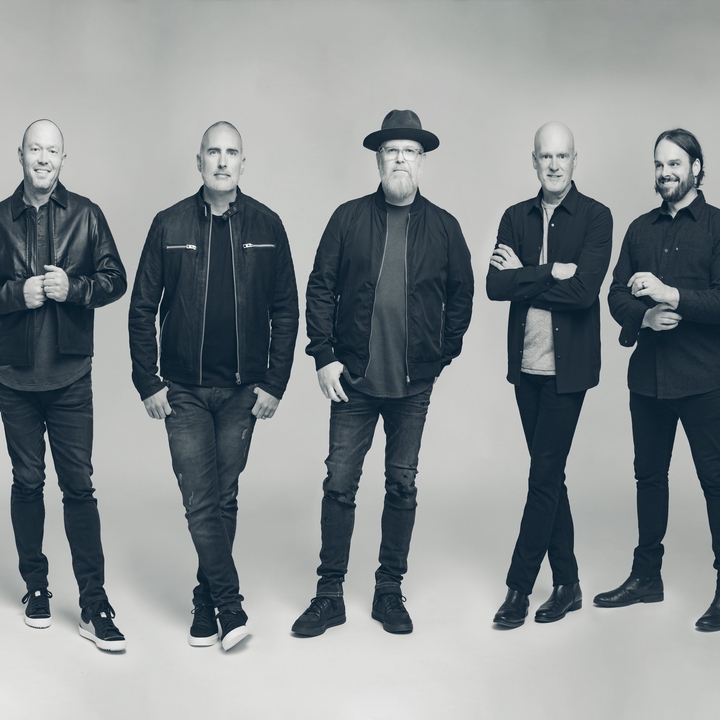I. Introduction
The act of worship, a profound expression of reverence and adoration towards the divine, is as diverse as the myriad cultures that dot our global landscape. This diversity is not only inevitable but also enriching, bringing vibrancy and depth to our collective spiritual experiences. The focus of this discourse is on this cross-cultural praise and worship – a topic that warrants attention given the increasing multicultural nature of many congregations worldwide.
A. Brief Overview of the Topic
Cross-cultural praise and worship refers to the integration and appreciation of diverse cultural expressions in religious practices. It acknowledges that people from different backgrounds may express their faith differently due to their unique cultural contexts, yet these variations are all valid manifestations of devotion.
B. Importance of Addressing Cultural Diversity in Worship Practices
In an increasingly interconnected world where congregations often comprise individuals from multiple ethnicities and cultural backgrounds, understanding and appreciating these differences becomes crucial for fostering unity within religious communities. Addressing cultural diversity in worship practices not only prevents potential misunderstandings or conflicts but also enhances the richness and depth of collective worship experiences.
This exploration into cross-cultural praise and worship will delve into how different cultures express their faith uniquely, discuss why it’s essential to embrace these varied expressions, examine potential challenges posed by such diversity within congregations, propose strategies for promoting unity among diverse members, illustrate with successful case studies, before finally reiterating on its inherent value.
II. Understanding Cultural Diversity in Worship
A. Explanation of how different cultures express worship uniquely
The expression of worship is as diverse as the world’s cultures, reflecting unique traditions, beliefs, and practices inherent to each society. These variations are often shaped by historical, geographical, social, and linguistic contexts that influence the way individuals connect with the divine.
In many Western Christian traditions, for example, worship might involve congregational singing accompanied by organ or piano music with hymns rooted in European musical styles. Sermons or homilies often form a significant part of these services, reflecting an emphasis on the verbal transmission of religious teachings.
On the other hand, African or Afro-Caribbean Christian communities might incorporate drumming and dancing into their worship services. These practices draw on indigenous African cultural traditions where rhythmic music and movement are integral parts of communal gatherings.
In Asian contexts like India or China where religions such as Hinduism or Buddhism are prevalent respectively, worship could involve offerings at home altars or temples and meditation practices which emphasize inner spiritual development over communal activities.
Similarly within Islam – a faith spanning numerous cultures – there are distinct expressions of worship too. While all Muslims share core practices like daily prayers (Salah) and annual fast during Ramadan regardless of their cultural background; local customs can influence how these rituals are carried out – from calligraphy used in Quranic inscriptions to architectural styles seen in mosques across different regions.
These examples only scratch the surface but highlight how diverse cultural contexts shape unique expressions of faith and devotion around the world. Understanding this diversity is crucial for fostering respect for different ways people connect with their spirituality within multicultural congregations.
B. The Role of Cultural Context in Shaping Religious Practices and Expressions
Cultural context plays a pivotal role in shaping religious practices and expressions, creating an intricate tapestry of worship styles across the globe. This context includes various factors such as history, geography, language, social norms, and values that collectively influence how individuals perceive and connect with the divine.
Historical influences often dictate religious rituals or traditions that have been passed down through generations within a culture. For instance, the use of Gregorian chant in Roman Catholic liturgy has its roots in medieval Europe while the practice of Kirtan (devotional singing) in Sikhism traces back to 15th century Punjab.
Geographical factors also contribute to shaping worship expressions. Indigenous communities often incorporate elements from their natural surroundings into their spiritual practices; for example, Native American tribes may use locally available materials like feathers or stones in their ceremonies.
Language is another significant cultural factor influencing worship styles. Different languages can convey unique nuances and emotions that shape how religious texts are interpreted and expressed. Arabic recitations of Quranic verses (Tajweed), Hebrew chanting of Torah portions (cantillation), or Pali chanting used by Theravada Buddhists each carry distinct rhythmic patterns influenced by their respective languages.
Social norms and values within a culture also affect worship practices by determining what is considered respectful or appropriate behavior during worship services. In some Eastern cultures like Japan or Korea where Confucian values emphasize respect for elders, it’s common to see hierarchical seating arrangements during religious gatherings.
In essence, cultural context provides a lens through which individuals interpret their faith – it shapes not only what they believe but also how they express those beliefs. Recognizing this role can foster greater appreciation for diverse expressions within multicultural congregations while promoting unity amidst diversity.
III. The Importance of Cultural Diversity in Worship Expressions
A. Recognition of the Richness Brought by Diverse Cultural Expressions to Worship
Diverse cultural expressions bring an undeniable richness to worship experiences, providing depth and variety that can invigorate and inspire congregations. Each culture contributes unique elements to the tapestry of worship, from musical styles and artistic symbolism to liturgical practices and narrative traditions.
In terms of music, for instance, African gospel choirs might infuse their praise with soulful harmonies and rhythmic drumming that invoke a sense of communal participation. Contrastingly, the solemnity of Gregorian chants or the intricate melodies of Byzantine hymns offer different yet equally profound musical expressions.
Artistic symbolism is another domain where cultural diversity shines. The elaborate iconography in Eastern Orthodox churches communicates theological truths through visual means, while indigenous spirituality often uses natural symbols like feathers or stones to represent divine attributes.
Liturgical practices also vary widely across cultures – from the high-church rituals seen in Anglican or Catholic services with their vestments and incense, to more informal settings common within Pentecostal or Quaker meetings where spontaneity is embraced.
Narrative traditions too play a crucial role in shaping worship expressions – consider how parables are central in Christian teachings while anecdotes (Hadiths) about Prophet Muhammad’s life are integral within Islamic sermons.
These diverse elements each add distinct flavors to the overall worship experience – they challenge our perspectives, enrich our understanding and broaden our appreciation for various ways people connect with divinity. By recognizing this richness brought by diverse cultural expressions, congregations can become more inclusive spaces that celebrate rather than suppress diversity.
B. Discussion on How Varied Expressions Can Enhance the Collective Worship Experience
Embracing varied expressions of worship within a congregation can greatly enhance the collective worship experience, fostering a deeper and more comprehensive understanding of spirituality that transcends cultural boundaries.
Firstly, diverse expressions provide an opportunity for learning and growth. They expose congregants to different ways of connecting with the divine, broadening their spiritual horizons. For instance, someone accustomed to silent prayer might find new depth in their spiritual practice through exposure to exuberant African gospel music or meditative Buddhist chants.
Secondly, they encourage empathy and understanding among members of a congregation. By experiencing how others express their faith, individuals can gain insights into different cultural perspectives and values, promoting mutual respect and unity within the community.
Thirdly, varied expressions can invigorate worship services by infusing them with a sense of dynamism and vibrancy. The integration of diverse musical styles, liturgical practices or artistic elements can add color and life to religious ceremonies making them more engaging for congregants.
Finally, embracing diversity in worship acknowledges and affirms the multiplicity of ways in which people connect with divinity – it sends a message that all expressions are valued as valid manifestations of faith irrespective of cultural origin.
In essence, integrating varied cultural expressions into communal worship not only enriches individual spiritual journeys but also strengthens communal bonds by fostering an environment where diversity is celebrated as an asset rather than seen as a source of division.
IV. Challenges Posed by Cultural Diversity in Congregations
A. Identification of Potential Misunderstandings or Conflicts That May Arise from Cultural Differences
While cultural diversity brings richness to worship experiences, it can also present challenges. Potential misunderstandings or conflicts may arise due to differences in religious practices, beliefs, and traditions that are deeply rooted in one’s cultural context.
One such challenge is the potential for misinterpretation or misunderstanding of certain cultural expressions of worship. For example, practices that are seen as reverent and respectful in one culture might be perceived as unusual or even inappropriate by individuals from different cultural backgrounds. This could range from specific prayer postures to the use of music and dance during worship services.
Another issue could be the conflict between traditional religious practices and new cultural expressions introduced into a congregation. Members who have been part of a congregation for a long time might resist changes brought about by newer members from different cultures, viewing these changes as deviations from established norms.
Differences in language used during worship can also pose challenges within culturally diverse congregations. If services are conducted primarily in one language, those who do not speak that language fluently may feel excluded or disconnected from the communal experience.
Lastly, there can be deeper theological disagreements arising out of different cultural interpretations of sacred texts or doctrines – what might be a fundamental belief for some could be understood differently by others based on their cultural context.
These potential misunderstandings or conflicts underscore the need for sensitivity towards diverse expressions within multicultural congregations. It calls for proactive efforts towards fostering understanding and promoting unity amidst diversity – topics we will explore further in subsequent sections.
B. Exploration on How These Challenges Can Affect Unity within Congregations
The challenges arising from cultural diversity, if not adequately addressed, can significantly impact the unity within congregations. Misunderstandings or conflicts based on cultural differences can lead to feelings of exclusion, discomfort, or discord among members.
When individuals feel their practices or beliefs are misunderstood or disrespected, it may create a sense of alienation. They might feel that their ways of expressing faith are not valued or accepted in the congregation, leading to a sense of isolation.
Resistance to new cultural expressions by long-standing members can create divisions within the congregation. If newer members perceive that their contributions are unwelcome, it could lead to tension and conflict between different groups within the community.
Language barriers present another challenge for unity. If worship services do not accommodate linguistic diversity, it may result in some members feeling excluded from full participation in communal worship activities and discussions.
Deeper theological disagreements stemming from diverse cultural interpretations can cause significant rifts within congregations as well. Such disagreements might lead to debates that strain relationships and disrupt communal harmony if not managed with sensitivity and respect.
The cumulative effect of these challenges is a potential weakening of communal bonds – the very essence of congregational life. It could hinder effective collaboration on community projects or initiatives and dampen the overall spirit of inclusivity and mutual support.
However, these challenges should not be seen as insurmountable obstacles but rather as opportunities for growth and learning. By acknowledging these potential issues upfront and proactively seeking solutions through dialogue, education, respect for diversity – congregations can work towards enhancing unity amidst diversity.
V. Promoting Unity and Understanding within Culturally Diverse Congregations
A. Discussion on the Importance of Fostering Respect and Appreciation for Different Cultural Expressions
Fostering respect and appreciation for different cultural expressions is vital in promoting unity within culturally diverse congregations. This involves recognizing that each culture has unique ways of expressing faith, all equally valuable in their capacity to facilitate spiritual connection.
Respect is the foundational element in this process – it involves acknowledging the validity of different worship styles without judgment or bias. It means understanding that practices unfamiliar or different from our own are not ‘wrong’ or ‘lesser,’ but simply another way of connecting with divinity.
Appreciation goes a step further than respect – it’s about actively valuing the richness brought by diverse expressions to communal worship experiences. This could be expressed through inclusive programming that celebrates cultural diversity, such as multicultural worship services or events where various cultural traditions are showcased.
Fostering such an environment requires open-mindedness and a willingness to learn from one another. It’s about challenging our assumptions, expanding our understanding, and embracing differences as opportunities for growth rather than barriers to unity.
Importantly, fostering respect and appreciation for diversity should not be a passive process but an active commitment made by both leadership and members of the congregation. It requires continuous effort, dialogue, education, and reflection to truly create an inclusive space where all feel valued in their unique expressions of faith.
By fostering this environment of mutual respect and appreciation, congregations can cultivate unity amidst diversity – creating a vibrant community that reflects the richness of God’s creation in its myriad forms.
B. Strategies for Promoting Understanding among Diverse Members (e.g., Educational Programs, Multicultural Events)
Promoting understanding among diverse members of a congregation requires proactive efforts and intentional strategies. Here are some effective approaches that can be implemented:
1) Educational Programs: Offering programs or workshops that educate members about different cultural expressions of worship can be a powerful tool for promoting understanding. These could include presentations on various religious practices around the world, discussions on theological interpretations from diverse perspectives, or even language classes to help bridge linguistic barriers.
2) Multicultural Worship Services: Incorporating elements from different cultures into regular worship services can foster appreciation for diverse expressions of faith. This might involve singing hymns in different languages, incorporating various musical styles into worship, or using liturgical practices from different traditions.
3) Shared Celebrations and Commemorations: Celebrating religious holidays from various cultures represented within the congregation can be another effective strategy. This not only educates members about these traditions but also provides an opportunity to experience them firsthand.
4) Dialogue and Discussion Sessions: Facilitating open forums where members can share their experiences and perspectives can promote mutual understanding and respect. These sessions should be conducted in a safe, respectful environment where all voices are heard and valued.
5) Inclusive Leadership: Ensuring diversity within leadership roles sends a strong message about the value placed on cultural diversity within the congregation. Leaders who represent different cultural backgrounds can provide unique insights and help guide the congregation towards greater inclusivity.
6) Mentorship Programs: Pairing newer members with established ones from different cultural backgrounds encourages direct interaction and learning between diverse individuals – fostering personal relationships that strengthen communal bonds.
By implementing such strategies, congregations can actively work towards building an inclusive community where diversity is not just tolerated but truly celebrated as an enriching element of collective worship experiences.
C. Role of Leadership in Facilitating Unity and Understanding
Leadership plays a pivotal role in facilitating unity and understanding within culturally diverse congregations. Leaders set the tone for how diversity is approached, managed, and celebrated within the community.
Firstly, leaders can act as role models in showing respect and appreciation for different cultural expressions. Their attitude towards diversity can significantly influence the congregation’s overall perspective. By demonstrating openness to learning about different cultures and integrating diverse practices into worship, leaders can inspire members to do the same.
Secondly, leaders are responsible for creating inclusive spaces where all members feel valued and heard. This involves ensuring that worship services, activities, programs cater to the diverse needs of the congregation – from language considerations to acknowledging various cultural holidays or traditions.
Thirdly, leaders have a crucial role in managing conflicts or misunderstandings that may arise due to cultural differences. They need to be equipped with skills in conflict resolution and intercultural communication to navigate these situations effectively.
Fourthly, leadership can initiate educational opportunities that promote understanding among diverse members – such as workshops on cultural awareness or dialogue sessions where members can share their experiences.
Lastly but importantly, leadership must be representative of the diversity within the congregation itself. Having leaders from various cultural backgrounds not only provides different perspectives but also signals that all cultures are valued equally within the community.
In essence, leadership’s role extends beyond mere management of a congregation; it involves shaping an environment where each member feels seen, respected and valued – fostering unity amidst diversity.
VI. Case Studies/Examples
A. Successful Examples Where Cross-Cultural Praise Has Been Implemented Effectively
Across the globe, there are numerous examples of congregations that have successfully implemented cross-cultural praise and worship.
1) Multilingual Worship Services: Some congregations have embraced linguistic diversity by incorporating multiple languages into their worship services. This might involve alternating between languages for different parts of the service, providing translations through subtitles or earpieces, or singing hymns in various languages. This allows members from different linguistic backgrounds to engage fully in worship and fosters a sense of inclusion.
2) Cultural Exchange Programs: Some religious communities have initiated cultural exchange programs where members from different cultural backgrounds share their unique traditions and practices with the rest of the congregation. This could be through presentations, performances, shared meals featuring traditional foods, etc., allowing members to learn about and appreciate each other’s cultures.
3) Diverse Leadership Teams: There are congregations that ensure diversity within their leadership teams – with leaders representing various cultural backgrounds. This not only ensures diverse perspectives at decision-making levels but also sends a strong message about the value placed on diversity within these communities.
4) Inclusive Religious Education: Certain religious communities incorporate teachings about various cultures and traditions as part of their religious education curriculum for children and adults alike. This fosters understanding from an early age and equips members with knowledge about diverse ways of expressing faith.
5) Interfaith Initiatives: Some congregations take it a step further by engaging in interfaith initiatives – inviting leaders or members from other faith traditions to share their beliefs and practices. Such initiatives foster mutual respect among different faith groups while enriching one’s own understanding of spirituality.
These general examples demonstrate how cross-cultural praise can be effectively implemented within congregations – creating inclusive spaces where all feel valued in their unique expressions of faith.
B. Lessons Learned from These Case Studies
1) Value of Openness: Congregations that successfully implement cross-cultural worship practices often exhibit a high degree of openness to new experiences and learning. They understand that diversity brings richness to their communal worship and are willing to step out of their comfort zones to embrace it.
2) Importance of Education: These congregations recognize the importance of education in fostering understanding among diverse members. They invest time and resources into programs that educate their members about different cultural expressions, thereby promoting respect and appreciation for diversity.
3) Role of Leadership: Successful implementation often involves proactive leadership that not only values diversity but also models this through their actions. Leaders play a crucial role in setting the tone for how diversity is approached within the congregation.
4) Need for Inclusivity: Effective cross-cultural worship practices are inclusive, ensuring all members feel valued and included. This might involve language accommodations, recognition of various cultural holidays, or representation in leadership roles.
5) Benefit of Dialogue: Open dialogue about cultural differences is another common feature in these congregations. Providing safe spaces where members can share their experiences fosters mutual understanding and helps prevent misunderstandings or conflicts.
6) Continuous Effort Required: Embracing cultural diversity in worship is not a one-time event but requires continuous effort. It involves regular reflection on current practices, willingness to make necessary changes, and ongoing commitment towards fostering an inclusive environment.
These lessons highlight key strategies for successfully integrating diverse cultural expressions into communal worship – emphasizing the importance of openness, education, proactive leadership, inclusivity, dialogue, and continuous effort.
VII. Conclusion
A. Reiteration on the Value and Necessity for Cross-Cultural Praise and Worship
In conclusion, embracing cultural diversity in praise and worship is not merely a beneficial practice but a necessary one. It allows congregations to fully reflect the richness of God’s creation, bringing together diverse expressions of faith under a shared spiritual pursuit. This diversity adds depth to communal worship experiences, offering varied perspectives that can enhance our understanding and connection with the divine.
B. Encouragement for Continuous Efforts Towards Embracing Diversity within Congregational Settings
However, fostering such an environment requires continuous effort, intentionality, and commitment from both leadership and members. It involves constant learning, dialogue, reflection, and adaptation to ensure all members feel valued in their unique expressions of faith.
Therefore, congregations are encouraged to see cultural diversity not as a challenge but as an opportunity – an opportunity for growth, enrichment, unity amidst diversity. As we continue striving towards this goal together – respecting each other’s differences while celebrating our shared faith – we contribute towards building more inclusive religious communities that truly embody the universal love at the heart of our spiritual pursuits.
![[From Psalms to Praise Bands] Story 2: Music as Worship](https://jubileeschool.org/wp-content/uploads/2021/02/sam-moqadam-9Yhx-nrJRNo-unsplash.jpg)
![[Jubilee columns] Exploring Reformed Worship: 2 Preview of the Series & Invitation for Engagement](https://jubileeschool.org/wp-content/uploads/2021/01/news_20200430.jpg)

![[From Psalms to Praise Bands] Story 1: Music as Divine Inspiration](https://jubileeschool.org/wp-content/uploads/2023/09/david-playing-the-harp-before-saul.jpg)
![[Jubilee columns] Exploring Reformed Worship: 1. The Importance and Overview of Reformed Worship](https://jubileeschool.org/wp-content/uploads/2023/09/5dba92263ebf0_clavinluther630.jpg)


![[Jubilee columns] Unfolding Praise: 9. Cross-Cultural Praise and Worship](https://jubileeschool.org/wp-content/uploads/2021/01/news_20201024.jpg)
